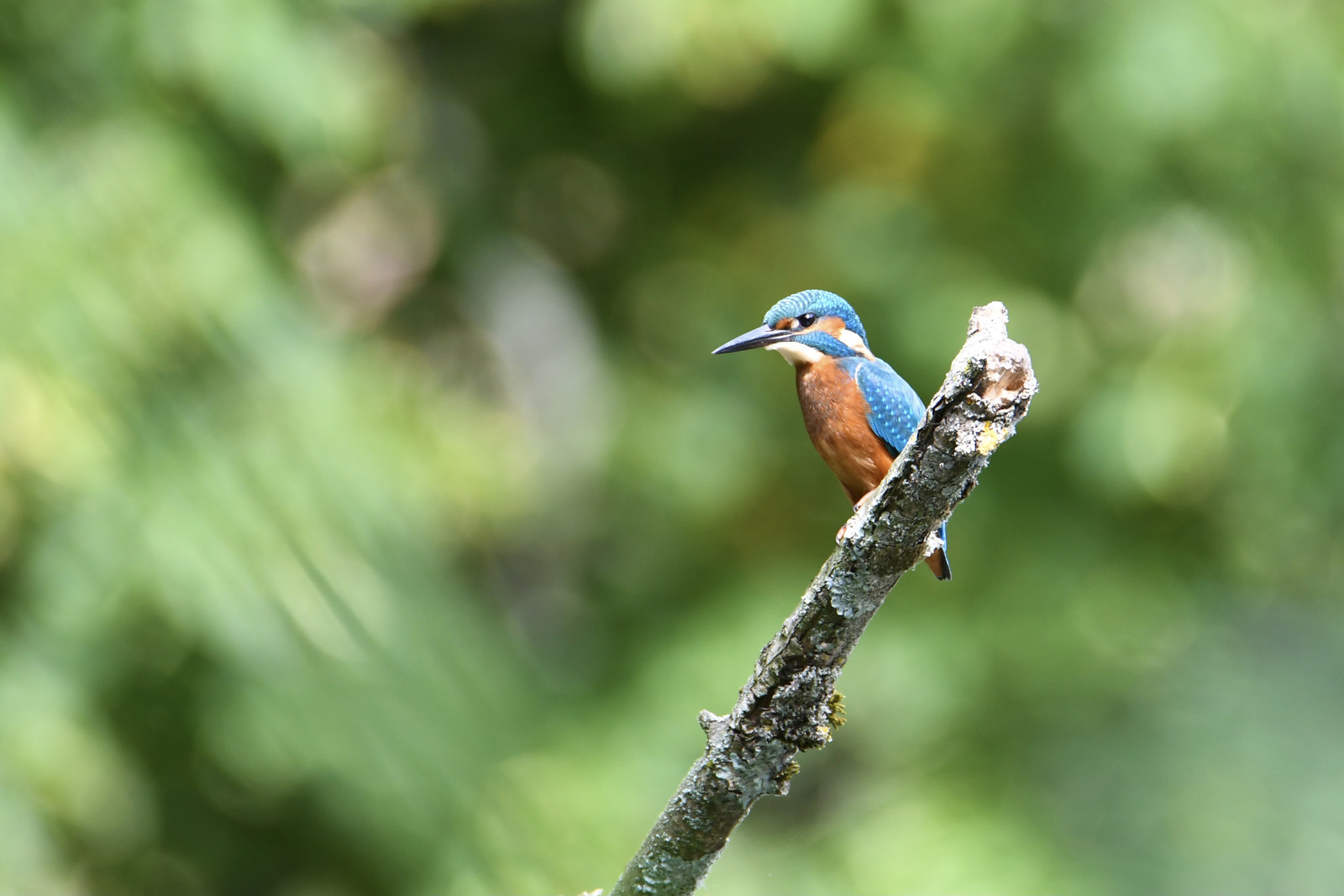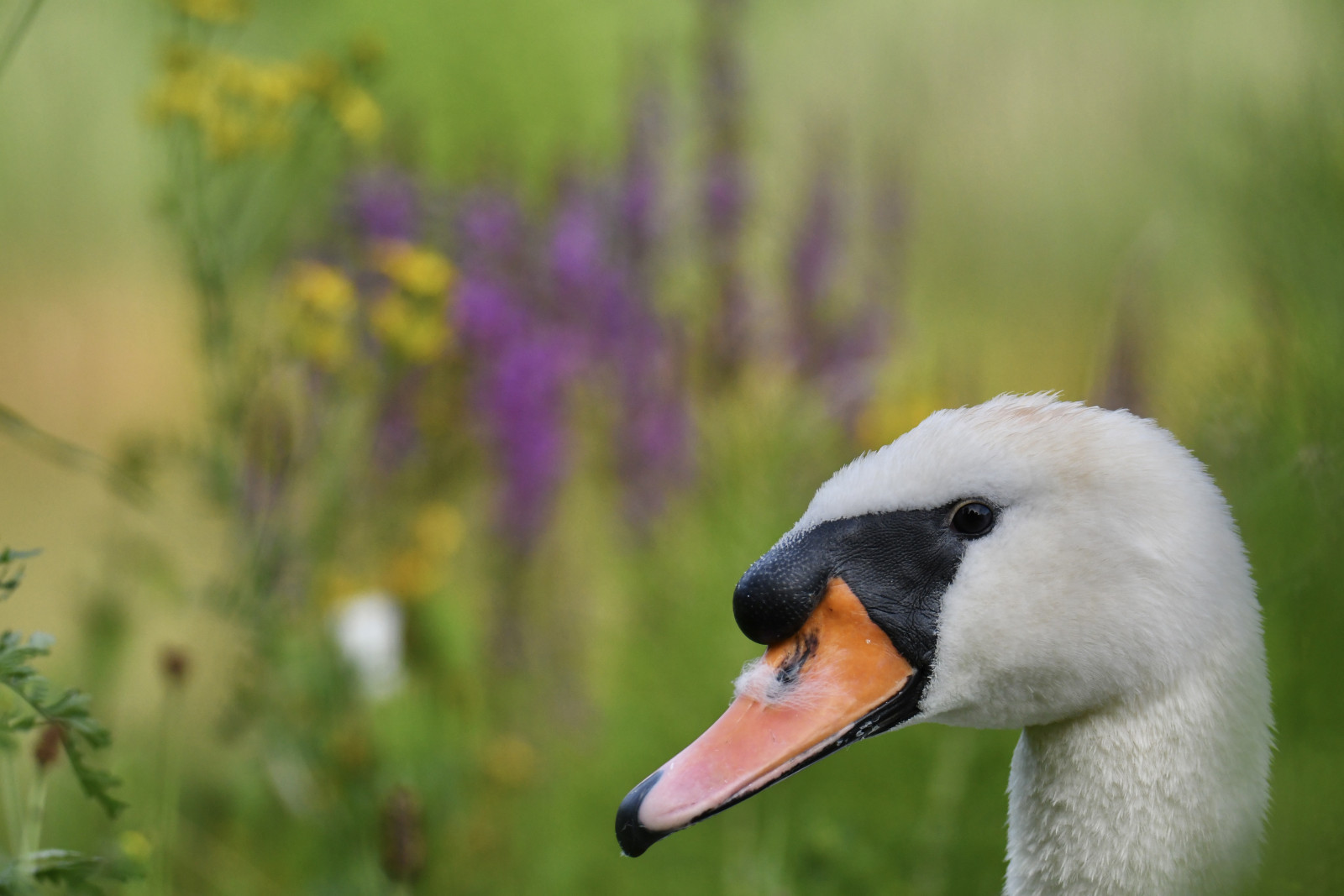Beschreibung
Domaine des Silex is an interesting birding area because it is located on the edge of the Soignes forest and has 2 ponds. This means that you can see a wide variety of birds (forest birds and water birds). You can see all the species of tits present in Brussels (Tannenmeise, Haubenmeise, Sumpfmeise, Blaumeise, Kohlmeise and Schwanzmeise), all woodpecker species (Buntspecht, Kleinspecht, Mittelspecht, Schwarzspecht and Grünspecht), thrushes (Singdrossel, Rotdrossel and Wacholderdrossel), common garden and park birds (Zaunkönig, Rotkehlchen, Heckenbraunelle, Gartenbaumläufer, Kleiber, Buchfink, Grünfink Wintergoldhähnchen, Sommergoldhähnchen, Ringeltaube, Hohltaube, Rabenkrähe , Dohle, Eichelhäher and Elster), raptors (Mäusebussard, Sperber, Habicht, Wespenbussard, Wanderfalke and Baumfalke) and lots of waterfowl (Stockente, Tafelente, Reiherente, Teichhuhn, Bläßhuhn, [ [Dodaars]], Haubentaucher, Schnatterente, Höckerschwan, Graureiher, occasionally the Silberreiher, Wasserralle, ,Kormoran, and the Eisvogel!
_________________________
Français: Petite réserve Natura 2000 en bordure de Foret de Soignes avec 2 étangs, un grand et un petit(ce dernier est accessible que les samedis ou 1er dimanche du mois). Ce site est d'un grand intéret car il est en bordure de Foret de Soignes et comporte 2 étangs, ce qui fait que on peut y voir une grande variété d'oiseaux (oiseaux forestiers et oiseaux d'eau).
On peut voir ici toutes les éspèces de mésanges présentes sur Bruxelles ( Tannenmeise, Haubenmeise, Sumpfmeise, Blaumeise, Kohlmeise et Schwanzmeise), toutes les éspèces de pics présentes sur Bruxelles ( Buntspecht, Kleinspecht, Mittelspecht, Schwarzspecht et Grünspecht), des grives ( Singdrossel, Rotdrossel et Wacholderdrossel), les oiseaux communs des jardins et parcs ( Zaunkönig, Rotkehlchen, Heckenbraunelle, Gartenbaumläufer, Kleiber, Buchfink, Grünfink Wintergoldhähnchen, Sommergoldhähnchen, Ringeltaube, Hohltaube, Rabenkrähe, Dohle, Eichelhäher et Elster), des rapaces ( Mäusebussard, Sperber, Habicht, Wespenbussard, Wanderfalke et Baumfalke) et plein d'oiseaux d'eau ( Stockente, Tafelente, Reiherente, Teichhuhn, Bläßhuhn, Zwergtaucher, Haubentaucher, Schnatterente, Höckerschwan, Graureiher, occasionellement la Silberreiher, Wasserralle, Lachmöwe,Kormoran, et le Eisvogel !
Details
Zugang
The site is accessible by tram line 8 or bus line 17. A car park can be found on the square opposite the Chemin des Flints, by which you access the site. You can also reach the area by bike but not enter the site with the bike. Bicycle parking is available at the entrance.
_________________________
Français: Le site est accessible avec la ligne 8 de tram ou 17 de bus, et en voiture des places peuvent etre trouvées sur la place en face du chemin des silex, par lequelle vous accedez au site. Vous pouvez y acceder à vélo mais pas rentrer dans le site avec le vélo; un parking a vélo est disponible a l'entrée.
Terrain und Habitat
Wald , Feuchtgebiet , Grasland, Wiesen , Vereinzelte Bäume und Büsche , SchilfflächenBedingungen
FlachRundweg
JaIst ein Spektiv nützlich?
JaGute Beobachtungszeit
GanzjährigBeste Beobachtungszeit
FrühjahrRoute
Normaler WegSchwierigkeitsgrad der Tour
EinfachErreichbarkeit
zu FußBeobachtungshütten oder -türme
NeinZusätzliche Informationen
In addition to all the species mentioned above, other species can be observed on the site depending on the season. In winter, the presence on the pond of Krickente, Wasserralle, and the Löffelente can be noted. On the site you will most certainly be able to see the Erlenzeisig, with luck Bergfink, and with a lot of luck Alpenbirkenzeisig. Stopping on the site during migration you can see in particular Flußuferläufer and Waldwasserläufer, Gartengrasmücke, Ringdrossel, Schwarzkehlchen, Trauerschnäpper ( not very frequent), Hausrotschwanz, Seidensänger (an individual has been present on the site since October 2021), the Schilfrohrsänger and the Gartenrotschwanz.
And finally, in summer you can see Mauersegler, many Mehlschwalbe, Rauchschwalbe, Wespenbussard, Baumfalke, Fitis, Zilpzalp, Teichrohrsänger, and occasionally the Sumpfrohrsänger as well as the Grauschnäpper. On migration, you can see above your head the Wiesenschafstelze, Wiesenpieper, Heidelerche, Feldlerche, Rotdrossel, Wacholderdrossel and Star (these last 3 can also be seen on the site). Note that during the whole year you can observe with a little luck Gimpel and Kernbeißer, as well as Grünfink. In flight and occasionally landed on the site you can see Stieglitz and Fichtenkreuzschnabel, but for these 2 you need a good eye!
_________________________
Français: En plus de toutes les éspèces mentionés précèdemment, on peut observer sur le site d'autres éspèces en dépendant de la saison. En hiver, on peut noter la présence sur l'étang de la Krickente, le Wasserralle, et le Löffelente. Sur le site on pourra voir très certainement le Erlenzeisig, avec de la chance le Bergfink, et avec un gros coup de bol le Alpenbirkenzeisig. En halte sur le site on peut voir nottament le Flußuferläufer et le Waldwasserläufer, la Gartengrasmücke, le Ringdrossel, le Schwarzkehlchen, le Trauerschnäpper( pas très fréquent),le Hausrotschwanz , la Seidensänger (meme si un individus est présent a ce jour sur le site depuis octobre 2021!), la Schilfrohrsänger et le Gartenrotschwanz.
Et pour finir, en été on pourra voir le Mauersegler, de nombreuses Mehlschwalbe,l' Rauchschwalbe, la Wespenbussard, le Baumfalke, le Fitis, le Zilpzalp, la très characteristique du site Teichrohrsänger, et occasionellement la Sumpfrohrsänger ainsi que le Grauschnäpper. En migration, on saura voir au dessus de nos tetes la Wiesenschafstelze, le Wiesenpieper, l' Heidelerche, l' Feldlerche, la Rotdrossel, la Wacholderdrossel et l' Star (ces 3 derniers peuvent aussi etre observés sur le site). A noter que pendant toute l'année on pourra observer avec un peu de chance le Gimpel et le Kernbeißer, ainsi que le Grünfink. En vol et occasionellement posés sur le site on pourra voir le Stieglitz et le Fichtenkreuzschnabel, mais pour ces 2 là vous avez interet a avoir une bone ouille !



